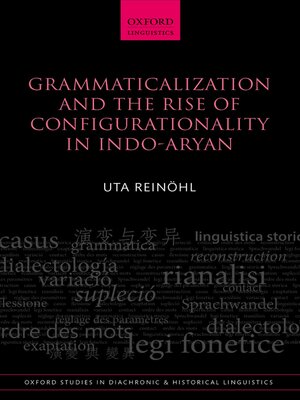Grammaticalization and the Rise of Configurationality in Indo-Aryan
ebook ∣ Oxford Studies in Diachronic and Historical Linguistics
By Uta Reinöhl

Sign up to save your library
With an OverDrive account, you can save your favorite libraries for at-a-glance information about availability. Find out more about OverDrive accounts.
Find this title in Libby, the library reading app by OverDrive.



Search for a digital library with this title
Title found at these libraries:
| Library Name | Distance |
|---|---|
| Loading... |
This book examines historical changes in the grammar of the Indo-Aryan languages from the period of their earliest attestations in Vedic Sanskrit (around 1000 bc) to contemporary Hindi. Uta Reinöhl focuses specifically on the rise of configurational structure as a by-product of the grammaticalization of postpositions: while Vedic Sanskrit lacks function words that constrain nominal expressions into phrasal units - one of the characteristics of a non-configurational language - New Indo-Aryan languages have postpositions which organize nominal expressions into postpositional phrases. The grammaticalization of postpositions and the concomitant syntactic changes are traced through the three millennia of Indo-Aryan attested history with a focus on Vedic Sanskrit, Middle Indic Pali and Apabhramsha, Early New Indic Old Awadhi, and finally Hindi. Among the topics discussed are the constructions in which the postpositions grammaticalize, the origins of the postpositional template, and the paradigmatization of the various elements involved into a single functional class of postpositions. The book outlines how it is semantic and pragmatic changes that induce changes on the expression side, ultimately resulting in the establishment of phrasal, and thus low-level configurational, syntax.







